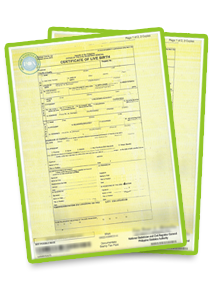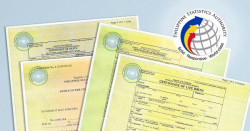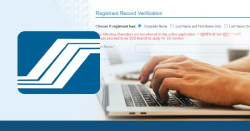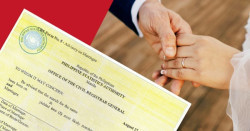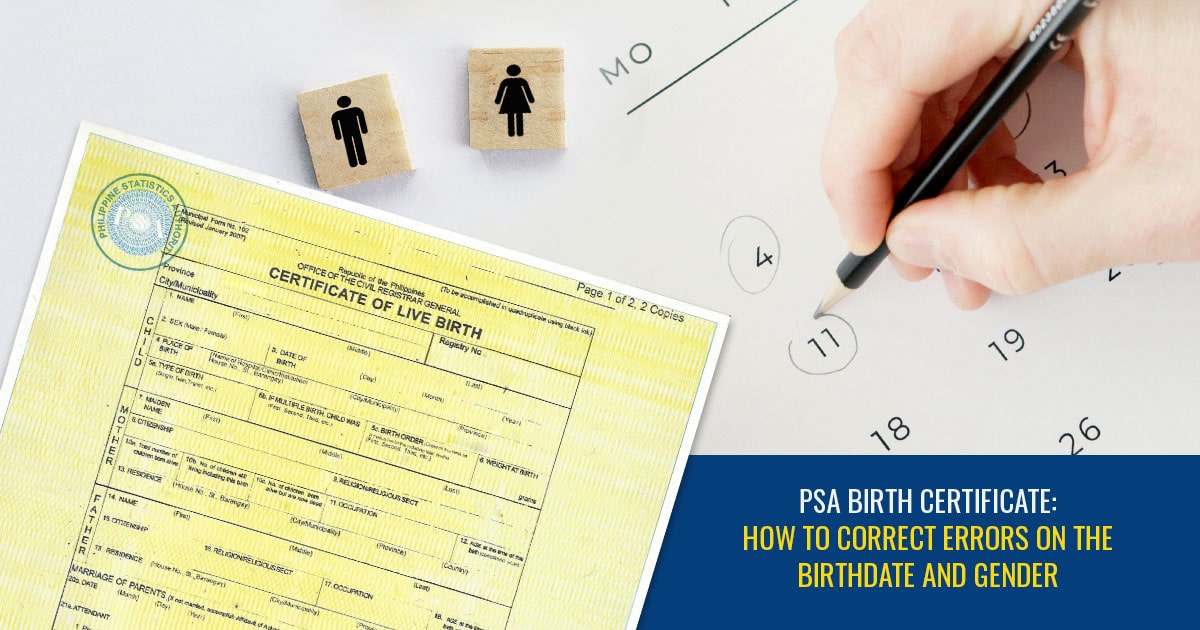
Navigating important transactions often requires presenting a valid Philippine Statistics Authority (PSA) birth certificate. This document serves as a cornerstone of one's identity, verifying details like age and parentage. However, encountering errors on a PSA birth certificate can throw a wrench into these processes, causing delays and frustration. Whether dealing with government offices or private establishments, inaccurate or missing information on this vital document can raise red flags about the individual's identity. Schools, banks, the Department of Foreign Affairs (DFA), and other institutions requesting birth certificates take such discrepancies seriously. For this reason, it is crucial to meticulously review the entries on your child's Certificate of Live Birth before submitting it to the Local Civil Registrar's office for final registration. Yet even with meticulous efforts, errors can sometimes slip through the cracks and find their way onto a PSA birth certificate. Perhaps your child's birth certificate contains an incorrect birthdate or gender. Maybe your own document has a mistake. Whatever the case, you are left seeking a legitimate solution to rectify this issue and ensure your personal information is accurate.
Correcting errors on a birth certificate after it has been registered and authenticated by the PSA can be a cumbersome and time-consuming process. By taking proactive steps to ensure accuracy from the very beginning, you can avoid these potential roadblocks and ensure a smoother journey for your child.
Thankfully, a law passed in 2012 called Republic Act 10172 (RA 10172) simplifies the process for correcting certain birth certificate errors. This law allows the city or municipal civil registrar, or even the consul general in some cases, to fix typos or mistakes in the birthday and month, or sex of someone's birth certificate without needing to go to court. RA 10172 builds on an earlier law (RA 9048) which already allowed these officials to correct basic errors in birth certificates but expands their authority to include birthdate and gender.
For the complete list of the different types of corrections applied on PSA certificates and the processes involved in each type of correction, read this blog post: Understanding Errors in Your PSA Birth Certificate and What To Do Next
This blog will guide you through the process of correcting clerical or typographical errors on a PSA birth certificate, specifically those affecting birthdate and gender. These types of mistakes no longer require the lengthy and potentially stressful process of court proceedings. However, it is important to note that errors involving a person's birth year fall into a different category. Since birth year directly impacts legal age, a crucial detail in many situations, these discrepancies require consultation with a lawyer to determine the appropriate course of action.
What is a clerical or typographical error?
A clerical or typographical error refers to a minor mistake made during administrative tasks like writing, copying, or typing information. In the context of birth certificates, these are simple, obvious errors in the recorded details. Think misspelled names, mistaken birthplaces, or accidentally switching the day and month on the birthdate. These errors are typically harmless and can be corrected with relative ease, often without needing to go to court.
Who may file the petition?
First, only adults (people 18 years old and above) can file the petition. Minors can't request changes to their own birth certificates.
Second, the person filing the petition needs to have a "direct and personal interest" in the correction or name change. This means they should be closely connected to the person on the birth certificate.
The following may file the petition for correction:
- The person with the error on their birth certificate: They have the most direct stake in getting things corrected.
- Close family members: The document owner’s spouse, children, parents, siblings, or even grandparents can also file the petition on their behalf. This shows their close relationship and interest in ensuring the owner person’s identity is accurate.
- Legal guardians: If the document owner is a minor and does not have involved parents, the legal guardian can take charge of the petition process.
- Authorized individuals: In some cases, someone that the document owner has given written permission can also file the petition. This might be a trusted friend, lawyer, or other representative acting on their behalf.
What should be the form and content of the petition?
Republic Act 10172 (RA 10172) requires the petition to be an affidavit, which means it is a sworn statement outlining the details of the request. Think of it like a formal document where you explain the situation under oath.
Here's what you'll typically need to include in your affidavit:
- The reason for your petition: This is the heart of your request. Clearly explain why you are filing the petition, whether it is to fix a mistake on the birth certificate or change the first name.
- Who you are: Demonstrate that you have the legal right to file the petition. This usually means you are the person on the birth certificate or someone closely related to them, like a spouse, child, parent, etc.
- The mistake you want fixed: Be specific about the error you want corrected. Indicate the incorrect information and what the correct information should be.
By providing this clear and concise information, you'll be well on your way to getting your petition approved.
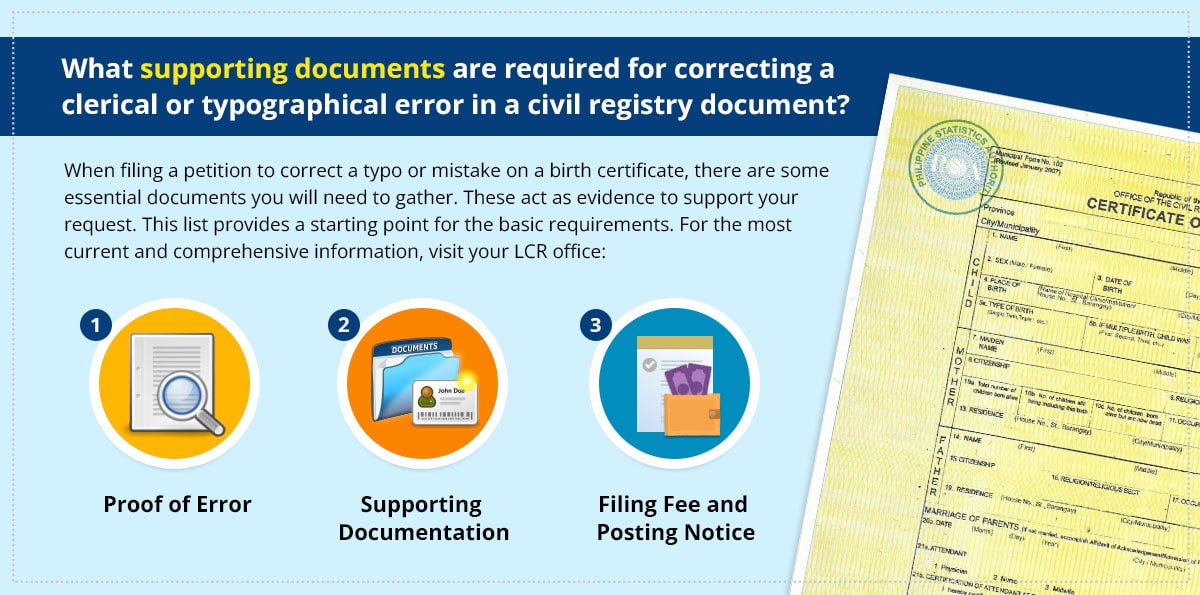
What supporting documents are required for correcting a clerical or typographical error in a civil registry document?
When filing a petition to correct a typo or mistake on a birth certificate, there are some essential documents you will need to gather. These act as evidence to support your request. This list provides a starting point for the basic requirements. For the most current and comprehensive information, visit your LCR office:
- Proof of Error: This is usually a certified machine copy of the birth certificate itself, clearly highlighting the specific incorrect information.
- Supporting Documentation: To strengthen your case, you will need at least two public or private documents that verify the correct information. This could include school records, baptismal certificates, medical records, government IDs, or anything else officially documenting your birth date, name, or gender.
- Filing Fee and Posting Notice: There will likely be a filing fee associated with the petition process. Be sure to get a certified machine copy of the receipt as proof of payment. In some cases, you might need to post a notice of your petition publicly. This helps ensure anyone who may object to the correction has a chance to be heard. Once the notice period is complete, you will typically need a certificate confirming it was properly posted.
Additional Requirements for Specific Errors:
It is important to note that for certain errors, there may be additional supporting documents required. For instance, if you are correcting an error in your date of birth or gender, you will typically need to submit:
- Early Life Documents: This could include your earliest school records, medical records, or a baptismal certificate. These documents should ideally pre-date the error on the birth certificate.
- Medical Certification (Gender): If you are correcting an error related to the gender on your birth certificate, you may need a medical certification from an accredited government physician attesting that you have not undergone sex reassignment surgery.
- Police and NBI Clearance: In some cases, you might need certifications from law enforcement agencies to confirm you have no pending cases or criminal records.
Local Variations:
While these are the general requirements, it is always best to check with your LCR office to confirm any additional documents they might require. This will ensure you have everything you need to file a complete and successful petition.
Is there a fee in filing the petition?
There is a filing fee associated with submitting a petition to correct a clerical or typographical error on a birth certificate. The Local Civil Registrar or the consul general, if filing abroad, has the authority to collect reasonable fees to process your petition. An important thing to note is that indigent petitioners, those who cannot afford the fee, are exempt from paying.
To ensure you have the updated information on the current filing fee, it is always best to contact your LCR office directly. They can provide you with the exact amount and any other payment instructions you may need.
Where to File Your Petition
The location where you file your petition depends on a couple of factors:
- Where the birth certificate is registered: Generally, you will file the petition with the Local Civil Registrar of the city or municipality where the birth certificate you want to correct is registered. This also applies to Philippine Consulates if the birth record was originally reported abroad.
- Your current residence: If you have moved within the Philippines since the birth certificate was registered, there are some options. You can still file with the LCR where the record is located, but you may also be able to file with the LCR in your current city or municipality.
-
For petitioners living abroad:
- Originally registered in the Philippines: If your birth certificate was registered in the Philippines and you now live abroad, you can file the petition with the nearest Philippine Consulate.
Specifics for Gender Correction:
- Regardless of Location: When correcting a gender error, you will always file the verified petition with the LCR or Philippine Consulate where the original birth certificate is registered.
Conclusion
While preventing errors on a birth certificate is ideal, this article has equipped you with the knowledge to address these issues effectively. RA 10172 simplifies the process for correcting clerical or typographical errors on a PSA birth certificate, allowing you to fix mistakes without extensive court proceedings. By understanding the types of errors covered under this law, who can file a petition, the required documents, and the filing process, you can ensure your PSA birth certificate accurately reflects your identity and avoid potential roadblocks in the future. Remember, for the most current information and any local variations, always consult with your Local Civil Registrar’s office or the Philippine Consulate if you reside abroad.
